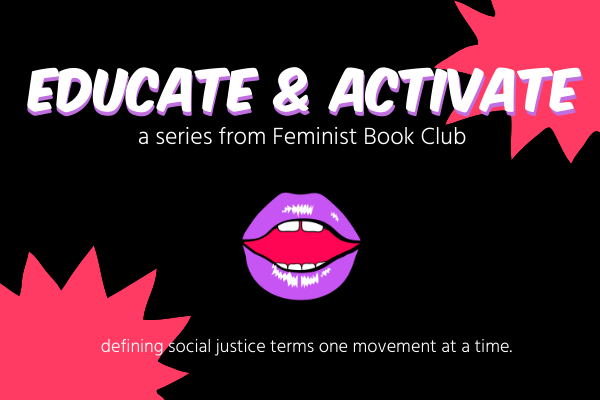Introduction:
Feminist Book Club blog contributors are working together to create posts as an “Educate & Activate” series. We will define a term or movement, provide historical context, and give you additional resources to learn more. We believe that an educated populace can be better activists, accomplices and co-conspirators. It is important to note that these are meant to be brief descriptions and not inclusive or exhaustive of all resources. We urge you to continue being curious, and continue learning more.
Definition
What is First Wave Feminism? The First Wave of Feminism (1848-1920) focused on achieving political equality and was led by the suffragettes of the late 19th and early 20th centuries. It began with the Seneca Falls Convention and ended with the Congress passing the 19th Amendment allowing women to vote.
First usage
A New York Times article by Martha Weinman Lear, “The Second Feminist Wave” first used the wave metaphor.
Historical context
Modern feminism begins during the around the Enlightenment in Europe, around the late seventeenth and eighteenth centuries. Mary Wollstonecraft’s A Vindication of the Rights of Women (1792), which argued for the rights of women, is and one of the earliest works of feminist philosophy. Wollstonecraft was one of the first modern feminist writers.
The Seneca Convention, in 1844, was the first organized convention to discuss the social, civil, and religious condition and rights of women. It was guided by the “Declaration of Sentiments,” crafted by Elizabeth Cady Stanton, the wife of an abolitionist. The convention was led by Quakers who were also abolitionists. Some of the prominent names who comprised this convention or were associated later are Elizabeth Stanton, Lucretia Mott, Matilda Joslyn Gage, Susan Brownell Anthony, and Sojourner Truth, whose speech, “Ain’t I a Woman?” delivered at the 1851 Women’s Rights Convention in Akron, Ohio that argued that women, black or white, were equal to men. Stanton and Anthony formed a newspaper called The Revolution that was a rallying cry to support the right to vote. Consequently, it helped to launch the suffrage movement in the United States. However, the suffragist movement was only restricted to white women, leaving out women of color.
Other activists, like Barbara Leigh Smith, focused on employment and education for women as important areas to change. Stanton also wrote The Woman’s Bible in 1895 that argued for equality using the Bible. It argued against the religious interpretation of the gendered division of labor and hierarchy. Additionally, the National Woman Suffrage Association, which was established by 1869 advocated for women’s suffrage, took more radical approaches. Tfhe other important movement was the American Woman Suffrage Association that wanted suffrage on a state by state basis. In 1890, the two groups merged and formed the National American Woman Suffrage Association (NAWSA).
In 1869, John Allen Campbell, the first Governor of Wyoming, granted women the right to vote, making Wyoming the first territory/ state to let vote. Congress passed the 19th Amendment in 1919. A significant number of states ratified the amendment by 1920, to legalize women’s right to vote in the US in 1920.
There were also significant milestones around the world during this time. Catherine Spence was a prominent figure who campaigned in Southern Australia where women could vote in 1895. Rose Scott found the Women’s Literary Society in 1882 in Australia that later grew into the Womanhood Suffrage League in 1891. On the other hand, Line Luplau who was a Danish feminist and suffragist co-founded the Danish Women’s Society Suffrage Union. During the 1920s, Denmark had achieved voting rights and equal rights laws “that protected a woman’s access to education, work and marital rights.” The rise of socialist and ultimately, communism helped in creating greater feminist equality in Russia and China. Lastly, although the UK provided women’s suffrage in 1918 via The Representation of the People Act by which women who were at least thirty years old and they or their husbands owned property could vote, their rights were fully equal to men in 1928.
Resources for Further Education:
A Vindication of the Rights of Woman by Mary Wollstonecraft
Woman Suffrage and Women’s Rights by Ellen Carol DuBois
Feminism and Suffrage: The Emergence of an Independent Women’s Movement in America, 1848-1869 by Ellen Carol DuBois
How the Vote Was Won: Woman Suffrage in the Western United States, 1868-1914 by Rebecca Mead
Women’s Suffrage Parade on Washington in 1913 video
And Nothing Less Podcast



Pingback: Educate and Activate: Third Wave Feminism | Feminist Book Club